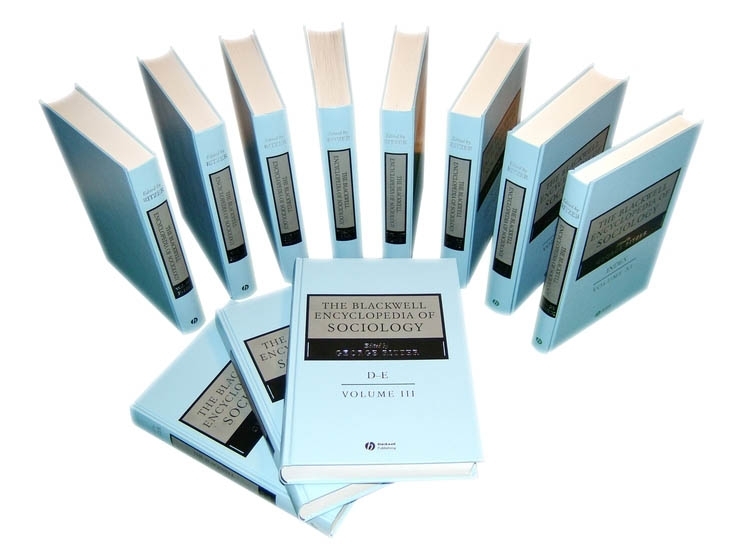Abstract
This entry looks at the uncoupling of relationships, both married and cohabiting. The phenomenon of relationship dissolution has significantly impacted the family dynamics of both adults and children in most western nations since the last quarter of the twentieth century. The entry first provides a comprehensive overview of the sociological and legal definitions of divorce and describes the general societal trends in relationship dissolution. Next, it examines both the causes and the consequences of breakups, including exploring the temporal, personal, and societal factors that contribute to the instability of relationships. Finally, it looks at the consequences of divorce for both adults and children.
References
- Amato, P.R. (2000) The consequences of divorce for adults and children. Journal of Marriage and Family, 62 (4), 1269–1287. doi: 10.1111/j.1741–3737.2000.01269.x.
- Amato, P.R. and Keith, B. (1991) Parental divorce and the well-being of children: a meta-analysis. Psychological Bulletin, 110 (1), 26–36. doi: 10.1037/0033–2909.110.1. 26.
- Bartholomew, K. and Horowitz, L.M. (1991) Attachment styles among young adults: a test of a four-category model. Journal of Personality and Social Psychology, 61 (2), 226–244. doi: 10.1037/0022-3514.61.2.226.
- Becker, G.S. (1981) A Treatise on the Family, Harvard University Press, Cambridge, MA.
- Bernardi, F. and Radl, J. (2014) The long-term consequences of parental divorce for children's educational attainment. Demographic Research, 30, 1653–1680. doi: 10.4054/DemRes.2014.30.61.
- Boertien, D. (2020) The conceptual and empirical challenges of estimating trends in union stability: have unions become more stable in Britain?, in Divorce in Europe (ed. D. Mortelmans), Springer, Cham, pp. 17–36. doi: 10.1007/978-3-030-25838–2_2.
10.1007/978-3-030-25838-2_2 Google Scholar
- Bohannon, P. (1973) The six stations of divorce, in Love, Marriage, and Family: A Developmental Approach (ed. M.E. Lasswell and T.E. Lasswell), Scott, Foresman, Glenview, IL.
- Bowlby, J. (1977) The making and breaking of affectional bonds. I. Aetiology and psychopathology in the light of attachment theory. An expanded version of the Fiftieth Maudsley Lecture, delivered before the Royal College of Psychiatrists, 19 November 1976. British Journal of Psychiatry, 130, 201–210. doi: 10.1192/bjp.130.3.201.
- Cherlin, A.J. (2004) The deinstitutionalization of American marriage. Journal of Marriage and Family, 66 (4), 848–861. doi: 10.1111/j.0022–2445.2004.00058.x.
- Cohen, P.N. (2018) The coming divorce decline. Socius: Sociological Research for a Dynamic World, 5, 1–6. doi: 10.31235/osf.io/h2sk6.
10.31235/osf.io/h2sk6 Google Scholar
- Cooke, L.P., Erola, J., Evertsson, M., et al. (2013) Labor and love: wives' employment and divorce risk in its socio-political context. Social Politics, 20 (4), 482–509. doi: 10.1093/sp/jxt016.
- R.E. Emery (ed.) (2013) Cultural Sociology of Divorce: An Encyclopedia, SAGE, Los Angeles, CA.
10.4135/9781452274447 Google Scholar
- EuroStat (2019) Marriages and divorces. Available at https://ec.europa.eu/eurostat/cache/metadata/en/demo_nup_esms.htm (accessed July 18, 2019).
- Goldstein, J.R. (1999) The leveling of divorce in the United States. Demography, 36 (3), 409–414. doi: 10.2307/2648063.
- González, L. and Viitanen, T.K. (2009) The effect of divorce laws on divorce rates in Europe. European Economic Review, 53 (2), 127–138. doi: 10.1016/j.euroecorev.2008.05.005.
- Guzzo, K.B. (2014) Trends in cohabitation outcomes: compositional changes and engagement among never-married young adults. Journal of Marriage and Family, 76 (4), 826–842. doi: 10.1111/jomf.12123.
- Härkönen, J. and Dronkers, J. (2006) Stability and change in the educational gradient of divorce: a comparison of seventeen countries. European Sociological Review, 22 (5), 501–517. doi: 10.1093/esr/jcl011.
- Hazan, C. and Shaver, P. (1987) Romantic love conceptualized as an attachment process. Journal of Personality and Social Psychology, 52 (3), 511–524. doi: 10.1037/0022-3514.52.3.511.
- Lesthaeghe, R. (2010) The unfolding story of the second demographic transition. Population and Development Review, 36 (2), 211–251. doi: 10.1111/j.1728–4457.2010.00328.x.
- Levinger, G. (1965) Marital cohesiveness and dissolution: an integrative review. Journal of Marriage and the Family, 27 (1), 19–28. doi: 10.2307/349801.
- Liefbroer, A. and Dourleijn, E. (2006) Unmarried cohabitation and union stability: testing the role of diffusion using data from 16 European countries. Demography, 43 (2), 203–221. doi: 10.1353/dem.2006.0018
- McGue, M. and Lykken, D.T. (1992) Genetic influence on risk of divorce. Psychological Science, 3 (6), 368–373. doi: 10.1111/j.1467-9280.1992.tb00049.x.
- McLanahan, S. (2004) Diverging destinies: how children are faring under the second demographic transition. Demography, 41 (4), 607–627. doi: 10.1353/dem.2004.0033.
- Oppenheimer, V.K. (1997) Women's employment and the gain to marriage: the specialization and trading model. Annual Review of Sociology, 23, 431–453.
- Smock, P.J. and Schwartz, C.R. (2020) The demography of families: a review of patterns and change. Journal of Marriage and Family, 82 (1), 9–34. doi: 10.1111/jomf.12612.
- Teachman, J.D. (2002) Stability across cohorts in divorce risk factors. Demography, 39 (2), 331–351.
- Trevino, M.B. (2013) Origins of divorce, in Cultural Sociology of Divorce: An Encyclopedia (ed. R.E. Emery), SAGE, Los Angeles, CA, pp. 918–921.
- van Dijk, R., van der Valk, I.E., Dekovic, M., and Branje, S. (2020) A meta-analysis on interparental conflict, parenting, and child adjustment in divorced families: examining mediation using meta-analytic structural equation models. Clinical Psychology Review, 79, 101861. doi: 10.1016/j.cpr.2020.101861.
- Wallerstein, J. (1991) The long-term effects of divorce on children: a review. Journal of the American Academy of Child & Adolescent Psychiatry, 30 (3), 349–360.
- Wiseman, R. S. (1975) Crisis theory and the process of divorce. Social Casework, 56 (4), 205–212. doi: 10.1177/104438947505600402.
- Wolfers, J. (2006) Did unilateral divorce laws raise divorce rates? A reconciliation and new results. The American Economic Review, 96 (5), 1802–1820.
- Yu, Y., Wu, D., Wang, J.-M., and Wang, Y.-C. (2020) Dark personality, marital quality, and marital instability of Chinese couples: an actor–partner interdependence mediation model. Personality and Individual Differences, 154 (1). doi: 10.1016/j.paid.2019.109689
Further Readings
- Amato, P.R. (2010) Research on divorce: continuing trends and new developments. Journal of Marriage and Family, 72 (3), 650–666. doi: 10.1111/j.1741–3737.2010.00723.x.
- M. Kreyenfeld and H. Trappe (eds) (2020) Parental Life Courses after Separation and Divorce in Europe, Springer, Cham. doi: 10.1007/978-3-030-44575-1.
10.1007/978-3-030-44575-1 Google Scholar
- Lyngstad, T.H. and Jalovaara, M. (2010) A review of antecendents of union dissolution. Demographic Research, 23, 257–292.
- D. Mortelmans (ed.) (2020) Divorce in Europe: New Insights in Trends, Causes and Consequences of Relation Break-Ups, Springer, Cham. doi: 10.1007/978-3-030-25838-2.
10.1007/978-3-030-25838-2 Google Scholar



